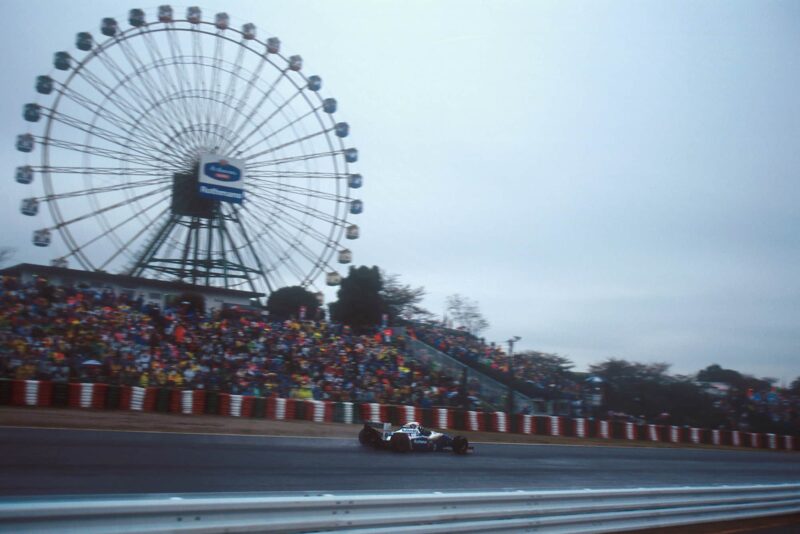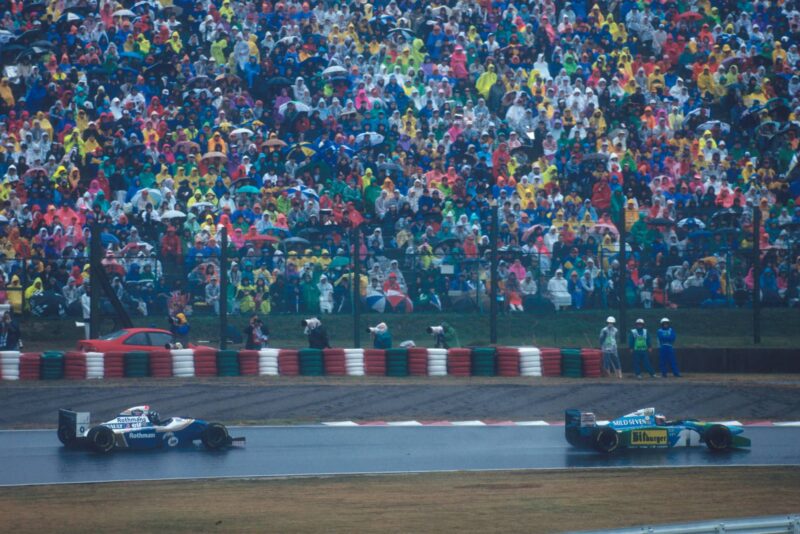Hill pitted and remained in front. And on a day for oddities even Hill’s pitstop wasn’t all it seemed, as his right-rear wheel wouldn’t budge and the mechanic decided to leave it on. Hill was oblivious until after the race.
From around lap 30 of 50 Schumacher, his car returning to him, started to eat at Hill’s advantage, reacquiring the lead on the aggregate time on lap 36. It appeared that normality had been, belatedly, established.
But no. Benetton knew its dread lap 40 awaited; the weather had by now relented so there was no question of an early finish.
Schumacher’s halt left him 14.5sec to make up in 10 laps. The sort of chase that, we would discover in time, Schumi was born for. There also was no sign of him settling for second.
For Hill, it was a tightrope walk without a net. Being passed by Schumacher would as good as lose him the title. Binning it would actually lose him the title, as well as shatter his reputation. It was on the stopwatch so there was no question of making it hard to overtake.
The race totalled close to two hours with no relent in pressure nor the challenge of the conditions. If this all wasn’t enough, the Williams’ handling was suffering clearly from its very second-hand rear tyre.

Michael Schumacher congratulates Damon Hill on his race victory
Schumacher on his first full-noise lap swiped 3sec from Hill’s lead and already “it seemed a foregone conclusion”, as Tremayne put it. “Steadily he eroded the deficit. 8.352sec, 7.032sec, 5.245sec, 4.231sec.” That was with two laps to go, then starting the final tour the gap was 2.4sec.
“Damon was all over the road as he used armfuls of lock to keep the Williams going,” Tremayne continued. “It looked messy and dramatic, but that was a highly effective last lap.”
Indeed Hill’s advantage not only remained but increased to 3.36sec. The pair would go to Adelaide a point apart. And Hill spoke years on of, during the first half of that final tour, having a kind of out-of-body experience in the cockpit, not unlike that immortalised by Senna, and touching a level of performance he never would again.
“It was the most intense race I ever did, no question,” Hill told Motor Sport later. “I just kind of ratcheted myself up.
“I was driving on a different level from how I’d ever driven before. It was an experience which lived with me for a very long time. I think what we’re capable of mentally is way beyond what we think it is…”
“In the view of most who saw it, including me,” Simon Taylor added, “the 1994 Japanese Grand Prix was Damon’s greatest drive.”




